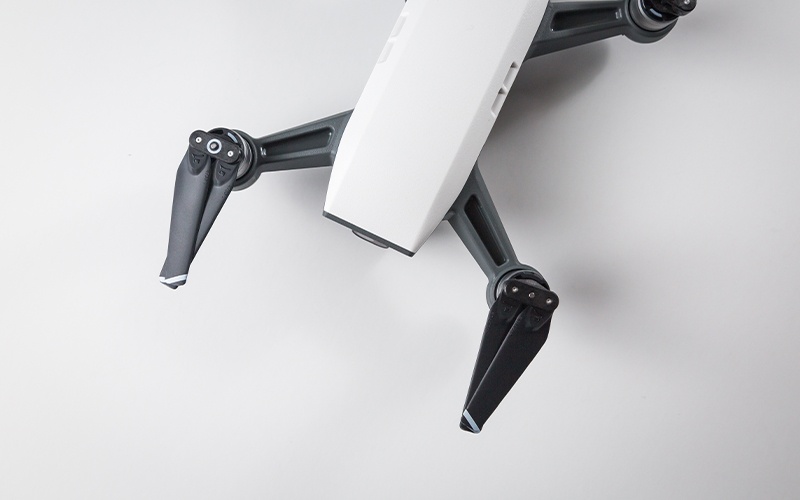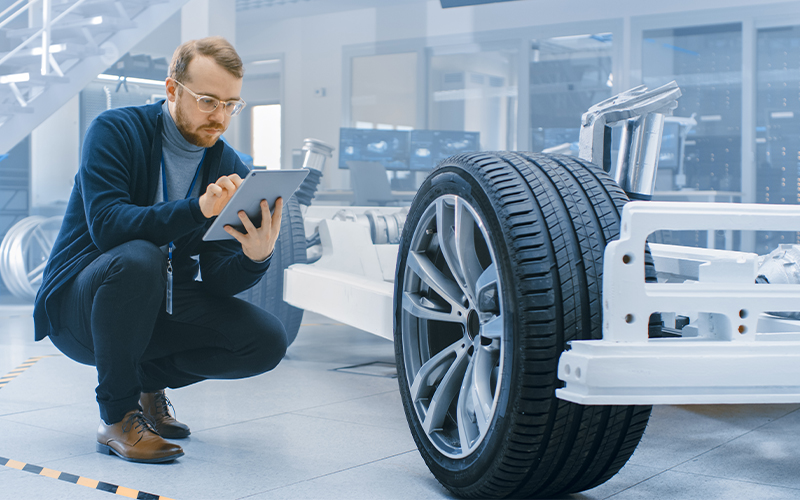BUSINESS TRANSFORMATION
The race for last-mile drones
The global pandemic in the year 2020 led to sweeping changes in consumer behaviour and a paradigm shift in the digital economy. Social distancing norms prompted a voluminous increase in online sales. Global e-commerce rose from 15% of total retail sales in 2019 to 21% in the year 2021.
In e-commerce, the stage at which the shipment is actually delivered to the customer’s home is known as the last-mile delivery. This last and final leg of delivery of a product to a buyer's home is considered the most difficult and expensive leg of the supply chain. In rural areas, the drop locations could be far apart while in urban areas the proximity of drop locations is often negated by increased traffic congestion. In addition, only half of all the packages shipped reach the buyer’s residence on the first attempted delivery. The last mile is also the stage where it is critical to ensure customer satisfaction and engagement since customers are constantly looking for cost-effective and quick delivery options. E-commerce being an extremely competitive landscape, to thrive in this environment, businesses have constantly striven to remain profitable while meeting customers' ever-changing expectations. Retailers know that they have to work towards optimising their supply chains and last mile deliveries to ensure that growth does not stall. This is precisely the area where organisations are trying to utilise autonomous unmanned aerial vehicles (UAVs) or drones.
Though drones were first used for military operations and surveillance, they are now seeing widespread usage in a multitude of areas such as monitoring the security of assets and inventory, surveying hazardous locations or restricted military bases, aerial photography for journalism and film and precision crop monitoring to name just a few! Drones are also making a mark in the supply chain and logistics space, especially for the delivery of small packages, medical supplies, food, postal services, and home care products. In fact, countries like the USA, China, Japan, Switzerland, Finland, Iceland, Australia, and Singapore are leading the way in developing more commercial drone delivery operations. The usage of drones in logistics is wide-ranging – right from delivery of orders to customers, surveillance of factories and warehouses, quick transport of medical and relief packages, to remote areas and collection of images and videos during inventory audits.
Why do drones seem to be the go-to solution for companies who are faced with last-mile delivery challenges?
The Good
The foremost benefit of drones is seen in their reduced environmental impact. In this day and age when there is a clarion call for a reduced carbon footprint and kindness to the environment, drones do away with the need for on-the-road transportation and reduce traffic congestion. They are faster, cheaper and can navigate difficult terrains easily compared to other forms of transportation. Their increased usage additionally circumvents the problem of high labour costs of personnel involved in last-mile deliveries, thus reducing total operational costs.
The Bad
Delivery by drones is not without its challenges. The usage of drones for logistics and delivery is subject to local laws. Privacy and security issues with the usage of drones has been debated for long. Non-military drones can be hijacked relatively easily with outsiders being able to tune in to the drone’s communication frequency. Apart from that, many drones are mounted with cameras that can record videos, images, and voices – these could be misused if they reach the wrong hands. The movement of drones could also be hampered by inclement weather, power lines and large trees.
What does the future hold?
When the e-commerce giant Amazon started testing drone delivery technology in the year 2013, it was initially met with a lot of scepticism. Cut to the future – the global drone package delivery market was valued at $0.94 billion in 2021. It is now projected to reach $32.1 billion by the year 2031, growing at a CAGR of 43.3% from 2022 to 2031.
We are in the early days of development of drone technology for logistics. However, with companies like Amazon, Google, Walmart and DHL actively investing in the research and development of drones, it is clear that the use of drones for logistical operations and deliveries will only increase in the coming years. The rapid technological advances in this field promise to pave the way for a future where large-scale implementation of drones will become a reality!
For organizations on the digital transformation journey, agility is key in responding to a rapidly changing technology and business landscape. Now more than ever, it is crucial to deliver and exceed on organizational expectations with a robust digital mindset backed by innovation. Enabling businesses to sense, learn, respond, and evolve like a living organism, will be imperative for business excellence going forward. A comprehensive, yet modular suite of services is doing exactly that. Equipping organizations with intuitive decision-making automatically at scale, actionable insights based on real-time solutions, anytime/anywhere experience, and in-depth data visibility across functions leading to hyper-productivity, Live Enterprise is building connected organizations that are innovating collaboratively for the future.







